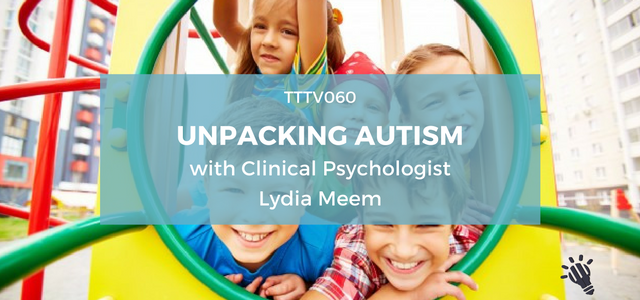[spp-player]
As a piano teacher, you probably consider music to be your area of expertise. But we also have to wear so many other hats as well.
When a student with special needs walks into our studio, we need to understand their diagnosis so we can teach them better. Sometimes we can feel completely in over our heads here. We might not know anything about the diagnosis, what it means and how to these students learn best.
That’s why I’m so excited to be unpacking autism with Lydia Meem today. Lydia is a clinical psychologist with lots of experience working with kids with autism.
She has some really fun and helpful tools and tricks to share with us today, as well as fantastic insights into how to teach these students in a way that suits them. Jump in, I’m sure you’ll learn a lot, I know I did.
Please find a full transcript of this episode at the bottom of this page. Alternatively, click below to download a PDF. If you are an Inner Circle Member, you can find the full video and transcript in the Member Resources Area. Not a member? See below for how you can get $100 off your membership today.
This month’s sponsor is Noviscore, your new online sheet music resource.
Noviscore‘s comprehensive music library has:
You can:
Special OFFER: 30% off all our piano sheet music for Tim Topham members during September!!
Please enter code TTSEPT at payment stage.
As a valued podcast listener, you’re eligible for a $100 discount on an annual TopMusicPro Membership. This discount lasts for as long as you’re a member and whatever price you sign up for today is the price you’ll pay as long as you remain a member.
Copy this coupon code to use when you see the “Coupon Code” box: TTTVPODCAST.
There are a lot of podcasts you could be tuning into today, and I’m grateful that you’ve chosen mine.
Being a full-time teacher myself, I know how busy teachers are and how much time, effort and passion we put into our students. Sometimes, the last thing we want to do in our time off is listen to more piano teaching stuff! So, well done for using this time for self-improvement.
Whether you’re at the gym, on the bike or in the car, I know that you and your students will get lots out of what you learn in the long run. Just make sure you try out some of the ideas before they get lost in the business of your next lessons.
If you enjoyed today’s show, please share it by using the social media buttons on the left of the page.
Also, kindly consider taking the 60-seconds it takes to leave an honest review and rating for the podcast on iTunes. Reviews are extremely helpful when it comes to show’s ranking and you can bet that I read every single one of them personally.
Lastly, don’t forget to subscribe to the podcast on iTunes, to get automatic updates every time a new episode goes live.
[spp-transcript]
Were there any of the aspects of autism that surprised you? Or anything you wish you’d known sooner?
What did you think of Lydia’s visual representation ideas?
Which of Lydia’s sensory tools do you wish you had?
